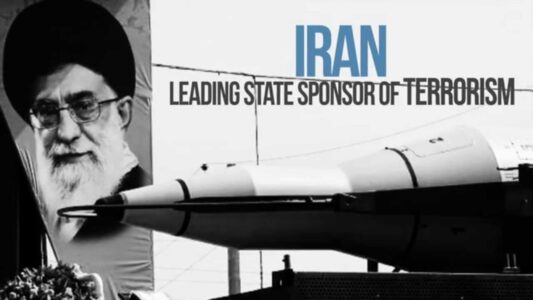
Iranian Regime ranks as top international terrorism supporter
The U.S. State Department released its annual Country Reports on Terrorism late in June, to—as is often the case with this yearly summary to Congress—little press coverage. Nevertheless, according to the department, the United States and its allies “made major strides to defeat and degrade international terrorist organizations.
”Terrorist designations are intended to make it more difficult for individuals or groups so identified to use global financial institutions, trade, travel and avoid potential criminal investigation and prosecution. Joining Iran as designated state sponsors of international terrorism were North Korea, Syria and Sudan.
Trump administration efforts through the Countering Transnational Terrorism Forum (CTTF)—launched by Washington in 2018—“brought together law enforcement officials, prosecutors, and financial practitioners from more than 25 countries to disrupt Iranian terrorist activities and networks,” according to the report.
The review labeled Hezbollah “an Iran-backed terrorist group that is based in Lebanon but has a truly global reach.” Referring to Washington’s diplomatic campaign against the movement, Ambassador Nathan A. Sales, coordinator of State’s counterterrorism bureau, noted that in 2019 the United Kingdom, Argentina, Paraguay and Kosovo joined the U.S. push to reject “the false distinction between its ‘military wing’ and a purportedly ‘political wing.’”
“Despite these successes,” State’s Bureau of Counterterrorism said in the Foreword to its 2019 Country Reports, dangerous threats “persisted around the world. Even as ISIS lost its leader and territory, the group adapted to continue to fight from its affiliates across the globe and by inspiring followers to commit attacks.”
ISIS-affiliated groups were active across Africa and beyond. ISIS-inspired attacks on three churches and three hotels in Sri Lanka on Easter Sunday, 2019 killed at least 290 people, including five Americans, and wounded more than 450.
Iran’s theocratic police state “and its proxies continued to plot and commit terrorist attacks on a global scale,” the report stated. “In the past, Tehran has spent as much as $700 million per year to support terrorist groups, including Hezbollah and Hamas [the Palestinian Islamic Resistance Movement], though its ability to provide financial support in 2019 was constrained by crippling U.S. sanctions.”
According to State, in recent years the mullahs’ regime “was directly involved in plotting terrorism through its IRGC and Ministry of Intelligence and Security,” including plots in North and South America, Europe, the Middle East and Africa. It also continued to permit an al-Qaeda support network to operate in Iran, “sending money and fighters to conflict zones in Afghanistan and Syria” and still allowed al-Qaeda members to live in the country. “Finally, the Iranian regime continued to foment violence, both directly and through proxies, in Bahrain, Iraq, Lebanon, Syria and Yemen.”
Tehran’s actions included targeting “some of the Kingdom of Saudi Arabia’s most important oil-processing facilities,” “active involvement of the IRGC-QF in the conflicts in Iraq and Syria, the latter in support of the Assad regime. Through the IRGC-QF, Iran continued its support to several U.S.-designated terrorist groups, providing funding, training, weapons, and equipment.
“Among the groups receiving support from Iran are Hezbollah, Hamas, Palestine Islamic Jihad, Kata’ib Hizballah (KH) in Iraq, and al-Ashtar Brigades in Bahrain. Iran also provided weapons and support to Shia militant groups in Iraq, to the Houthis in Yemen, and to the Taliban in Afghanistan.
Source: JPC





